Understanding Swiss Withholding Tax: What Is It, Who Pays It, and How do You Reclaim It?

Withholding tax (Verrechnungssteuer) is a distinctive feature of Switzerland’s fiscal system. It is a federal tax that is primarily designed to reduce tax evasion on capital income. Set at a standard flat rate of 35% (with some exceptions), it applies to dividends, interest, lottery winnings, and certain insurance benefits. It is withheld directly at the source and is usually refunded to the taxpayer if they correctly declare their investment income.
In this article, we’ll break down how Swiss withholding tax works, which income it affects, how you can reclaim it, and what you should watch out for—whether you’re a Swiss resident, an international investor, or a company operating in Switzerland.
Book a free initial consultation with our experts.
Book a callHighlights
- Withholding tax is levied at a flat 35% on Swiss-source income like dividends, interest, and lottery winnings
- Swiss residents can reclaim the full amount if the income and assets are declared correctly in their tax return
- Foreign investors are eligible for partial refunds under applicable double taxation treaties
- Special exemptions apply to intra-group dividends, foreign fund distributions, and fiduciary deposits
- Refund applications must be submitted within 3 years
Content
- Understanding Swiss Withholding Tax: What Is It, Who Pays It, and How do You Reclaim It?
- Highlights & content
- What is Swiss withholding tax?
- What income is subject to withholding tax?
- How does withholding tax work in practice?
- Who must pay withholding tax and who can reclaim it?
- Reclaiming withholding tax: process and deadlines
- When can you apply for a refund?
- Exemptions and special cases
- Challenges and practical considerations
- Still unsure about Swiss withholding tax?
- FAQ
- Trusted by over 150 companies
What is Swiss withholding tax?

Swiss withholding tax(Verrechnungssteuer), also known as “anticipatory tax”, is a federal tax levied on certain types of income paid by a Swiss source. It is based on the Federal Act on Withholding Tax (VStG) and further detailed in the accompanying Withholding Tax Ordinance (VStV). Both are administered and enforced by the Swiss Federal Tax Administration (FTA).
Unlike payroll-based withholding tax (Quellensteuer), which applies to employment income of foreign workers, Verrechnungssteuer targets income from capital investments, such as interest, dividends, and similar payments. The primary purpose is not to raise revenue but to ensure that recipients report these earnings on their tax returns. In other words, it acts as an enforcement tool for compliance.
The principle is simple: tax is withheld at the source and only refunded if the recipient plays by the tax rules and declares their income from capital investments, as well as the assets from which the taxable income arose.
Here you can easily calculate the costs of your accounting.
Price calculatorWhat income is subject to withholding tax?

Swiss withholding tax applies primarily to income from movable capital assets, but it also covers certain types of insurance and lottery winnings.
The most commonly taxed income types are:
- Dividends distributed by Swiss companies,
- Interest paid on Swiss bonds and bank accounts,
- Lottery and gambling winnings from Swiss sources,
- Annuities and pensions,
- Capital benefits from certain insurance policies.
The default withholding rate is a flat 35%, which applies to dividends, interest, and lottery winnings. Annuities and pensions are subject to a reduced rate of 15%, while capital payments from insurance policies may be taxed at 8%.
Importantly, it’s not who receives the income that determines whether withholding tax applies, but where the income originates. If the payer is based in Switzerland, the income generally falls within scope.
While the 35% flat rate might seem high at first glance, it’s only intended as a compliance tool rather than a permanent tax burden for those who report their income properly. In most cases, the tax is fully or partially refunded depending on the taxpayer’s residence and whether a double taxation agreement applies.
Book a free initial consultation with our experts.
Book a callHow does withholding tax work in practice?

Withholding tax is collected at the source and only refunded (partially or fully) to the taxpayer after they have declared the income in their tax return and submitted a claim to the appropriate federal or cantonal tax authorities.
The process is as follows:
- The bank, insurance company, or Swiss corporation deducts the tax before distributing the income.
- The recipient gets the net amount (e.g., 65% if the tax rate is 35%).
- The withheld portion is forwarded directly to the FTA.
- In the case of a Swiss-resident individual taxpayer, the FTA then forwards the tax to the relevant cantonal tax authorities.
- If the individual correctly declares the income in their tax return, the canton manages the refund of the withholding tax. In most cases, the withheld amount is first credited against the person’s cantonal tax bill, and any balance is refunded in cash if applicable.
- The process differs for legal entities (companies, associations, and other entities), who instead submit a direct claim to the FTA to recover the withheld tax.
Example: You earn CHF 2,000 in savings account interest, so your bank pays you CHF 1,300 and sends CHF 700 withholding tax to the federal tax authorities. The FTA then passes that amount on to your cantonal tax authority.
When you file your tax return and correctly declare the CHF 2,000 interest income, your canton refunds the CHF 700 withholding tax. First, it is credited against your cantonal tax bill. If there is any leftover (e.g. if your total cantonal taxes are only CHF 500), the balance (CHF 200) is refunded in cash to your bank account.
Here you can easily calculate the costs of your accounting.
Price calculatorWho must pay withholding tax and who can reclaim it?

Withholding tax must be paid by any natural or legal person who receives income from Swiss sources that falls within the scope of the Federal Withholding Tax Act. It applies to both Swiss and foreign residents, though the eligibility and process for reclaiming the tax differ.
Swiss residents
Swiss individuals can reclaim the tax by declaring the income in their annual tax return. If the income (e.g. dividends, interest) is reported correctly, the withholding tax is credited against their total cantonal and federal tax liability. If the withheld amount exceeds the total tax due, the remaining balance is paid out in cash by the cantonal tax authorities.
Swiss legal entities (e.g., companies, associations, or foundations) submit their refund claims directly to the Federal Tax Administration (FTA). The claim must be filed using the official form and typically includes supporting documentation such as financial statements and dividend records. The refund is usually processed in the calendar year following the year in which the income was received.
Foreign residents
Foreign investors are also entitled to a (full or partial) refund under Switzerland’s double taxation agreements. The applicable treaty determines whether a refund is allowed and, if so, the maximum refundable rate (typically 10% to 15% for dividends and often 0% to 10% for interest).
Foreign applicants must submit the appropriate country-specific reclaim form to the FTA, proof of residence in the treaty country, and other supporting documentation such as proof of the income received and the withholding tax that was deducted.
Why do foreign residents only receive a partial refund?
It’s important to note that foreign investors do not declare their Swiss investment income in Switzerland, as they are not subject to Swiss income tax. Instead, they declare it in their home country. For this reason, the full 35% is not refunded.
Switzerland retains the portion it is entitled to under the applicable treaty, and the investor typically receives a tax credit in their home country for that amount. This ensures the income is taxed primarily where the investor resides while still allowing Switzerland to tax income sourced from within its borders.
Example:
A French resident receives CHF 1,000 in dividends from a Swiss company. Switzerland applies a 35% withholding tax, deducting CHF 350. Under the France–Switzerland tax treaty, Switzerland is entitled to retain 15%. The French investor can reclaim CHF 200 from the Swiss tax authority (to reduce the effective Swiss tax to 15%). In France, dividend income is taxed at a flat rate of 30% (including income tax and social charges). France allows the investor to deduct the CHF 150 Swiss tax already paid, so the investor pays only the remaining CHF 150 to French tax authorities.
This results in a total tax burden of CHF 300 (30%), split equally between Switzerland and France, without double taxation.
Book a free initial consultation with our experts.
Book a callReclaiming withholding tax: process and deadlines

As mentioned previously, the withholding tax refund procedures differ by residency and legal form. To recap:
- Swiss individuals: Must declare the income in their cantonal tax return. The refund is usually credited against cantonal and federal taxes, with any excess paid out in cash.
- Swiss legal entities: Must file a refund application directly with the Federal Tax Administration (FTA), usually with supporting documents such as financial statements.
- Foreign investors: Must submit a treaty-based refund request to the FTA using the appropriate country-specific form along with supporting documents.
Here you can easily calculate the costs of your accounting.
Price calculatorWhen can you apply for a refund?

Under normal circumstances, the refund application can only be submitted after the end of the calendar year in which the taxable benefit became due (Art. 29 – VStG).
However, there are exceptions allowing for earlier refunds:
- Early refund: In special cases (e.g., relocation abroad, death) or in cases of hardship, an early refund request may be submitted (Art. 29 para. 3 VStG).
- Interim refunds (installments): If an applicant (typically a legal entity) can credibly demonstrate that their annual refund entitlement will amount to at least CHF 4,000, they may apply for interim refunds from the Federal Tax Administration (FTA). A final, comprehensive refund application must be submitted within three months after the end of the year (Art. 65 – VStV).
What is the time limit for making claims?
The right to a refund expires three years after the end of the year in which the taxable income was due (Art. 32 VStG).
What is the processing time of refunds?
Refunds are typically processed within several months. No formal confirmation of receipt is sent, but applicants can check the status via the FTA’s ePortal.
What is the processing time of refunds?
Refunds are typically processed within several months. No formal confirmation of receipt is sent, but applicants can check the status via the FTA’s ePortal.
Book a free initial consultation with our experts.
Book a callExemptions and special cases

Several types of income or situations are either exempt from Swiss withholding tax or benefit from simplified procedures. Examples include:
- Swiss intra-group dividends: If a Swiss parent company holds 10% or more of a Swiss subsidiary, no withholding tax needs to be deducted on dividend payments to the parent—provided the required notification is submitted to the FTA in accordance with the simplified procedure.
- Foreign parent companies: If a foreign parent company qualifies for a full or partial exemption under an applicable double taxation treaty, the reduced withholding tax rate can often be applied directly—without requiring the full 35% deduction followed by a refund. This requires advance approval by the FTA and proper documentation.
- Fund distributions: If at least 80% of a Swiss investment fund’s income originates from abroad, no withholding tax is applicable on distributions to foreign investors.
- Fiduciary deposits: Interest on funds placed with a foreign bank through a Swiss bank, under a fiduciary arrangement, is exempt from Swiss withholding tax for foreign residents. In this setup, the Swiss bank places the funds in its own name but on behalf of the client. Because the interest is paid by the foreign bank and not by the Swiss bank, it falls outside the scope of Swiss withholding tax.
- Capital contribution principle: Repayments of qualifying shareholder contributions are not subject to withholding tax, provided they are properly recorded in the company’s capital contribution reserves and reported to the FTA.
Here you can easily calculate the costs of your accounting.
Price calculatorChallenges and practical considerations

While the Swiss withholding tax system is well-organized, there are several practical challenges that can lead to delays, penalties, or unnecessary tax costs if not handled correctly.
- Incorrect withholding: Failure to withhold properly can have serious consequences. If the payer neglects their withholding duty, the total amount paid to the recipient is treated as a net amount, and the 35% tax is recalculated on a grossed-up basis, leading to an effective tax rate of over 50%. See the FAQ section for further explanation of how this works in practice.
- Documentation: Incomplete, outdated, or incorrectly filled forms are one of the most common causes of delays or rejections in the refund process. Supporting documents must be complete, accurate, and consistent with the submitted claim.
- Administrative fines: Failure to comply with proper withholding tax obligations, such as notification procedures for intra-group dividends or timely reporting of taxable events, can lead to administrative penalties. These fines are typically imposed by the FTA and can apply even if the underlying tax is eventually refunded.
- Inheritance and co-ownership: Special procedures apply when income or assets are held jointly, such as in estates or co-ownership associations. For income received after the date of death, each heir typically files a refund application individually. In some cases, a representative may file on behalf of the community of heirs, provided proper documentation and authorization are in place.
Book a free initial consultation with our experts.
Book a callStill unsure about Swiss withholding tax?

Dealing with Swiss withholding tax can be straightforward in theory, but the refund process often involves complex forms, strict deadlines, and documentation that needs to be exactly right.
Nexova helps individuals, companies, and international investors navigate these requirements with confidence.
We support you with:
- Clarifying your eligibility for full or partial refunds under Swiss law or applicable tax treaties
- Preparing and submitting compliant, complete documentation to the FTA or cantonal authorities
- Structuring dividend and interest flows to avoid unnecessary withholding in the future and optimize your tax situation
- Handling inheritance and cross-border issues that can complicate claims
Looking for ongoing support or need help with a claim? Contact Nexova today and we’ll guide you through every step.
FAQ
Answers at a click
What happens if withholding tax is not deducted properly?
Failure to withhold properly can have serious consequences for the distributor of the income. The entire payment may be reclassified as a net amount, triggering retroactive gross-up taxation at an effective rate of over 50%.
For example, if a Swiss company pays CHF 1,000 in dividends to a shareholder but fails to deduct the required 35% withholding tax, the tax authorities will assume that the CHF 1,000 represents only 65% of the full gross amount. They “gross up” the payment: CHF 1,000 ÷ 0.65 = CHF 1,538.46. The 35% tax is then applied to the grossed-up amount (CHF 538.46). This means the company must pay significantly more than if it had withheld correctly, resulting in an effective tax rate of over 50% on the original payment.
How long does a refund take?
Refunds may take several months. You can track the application status in the ePortal. Processing times depend on the volume and completeness of applications submitted, so providing accurate documentation can help avoid delays.
Can I apply more than once per year?
No. Applications are usually accepted once per calendar year (Art. 64 VStV). The income and withholding tax amounts should be summarised and submitted in a single annual claim.
How is withholding tax handled in inheritance cases?
In the case of an inheritance, any withholding tax on income earned up to the date of death must be reclaimed by filing in the name of the deceased with the competent cantonal tax authority (typically in the canton where the person last lived). For income received after the date of death, each heir must submit an individual refund claim for their share (Art. 58 VStV).
What happens if I miss the deadline?
The refund right expires after three years, and late applications are rejected. The deadline is strict and cannot be extended, even in cases of oversight or misunderstanding.
Where can I get help?
For personal assistance and help with documentation, Nexova provides expert support in reclaiming withholding tax and structuring payments tax-efficiently. We handle the full process—from eligibility checks and paperwork to submission and follow-up with the authorities.
Trusted by over 250 companies
Discover the diversity of our customers

As an internationally active biotechnology company that stands for innovation and the highest quality, we work exclusively with partners who meet our high standards. Nexova consistently impresses us with exceptional service quality, robust processes, and an impressive pace. The professional, solution-oriented, and efficient collaboration allows us to fully focus on our core business. Additionally, we would like to highlight the remarkable cost savings of 35% compared to in-house accounting. We particularly appreciate how Nexova quickly understands, develops, and promptly implements complex requirements – both within Switzerland and at our international subsidiaries. We can wholeheartedly recommend the Nexova team.

Nexova AG offers highly professional accounting services that have significantly enhanced our financial management at Learning Lab. Their team is precise and reactive, always delivering accurate and timely reports while promptly addressing our queries. With Nexova AG’s support, we manage our clients’ accounts and finances more efficiently. We highly recommend Nexova AG for their exceptional accounting services.

For us as a new catering company, it is essential that our trustee understands our specific needs and responds flexibly to our requirements. In Nexova AG, we have found the ideal partner who supports us competently in all fiduciary matters and actively promotes our growth.

Uncomplicated or serious? Or is it and? A young, clever team is at work here, offering excellent services, highly uncomplicated and competent. Instead of a prestigious reception, expensive offices and chocolates, there are fast services and competent services. For me as a one-man company, this is exactly what I need.

Arvy AG has found an exceptional partner in Nexova AG. Their very high level of expertise in FINMA-regulated industries ensures that our financial transactions are in safe and competent hands. What sets Nexova apart is their flat-rate pricing structure, which has helped us greatly with budgeting and financial planning. As a company committed to long-term success and integrity in investments, we are very satisfied with the services provided by Nexova AG.

For us as an EdTech startup, it is very important that our trustee is as digital and agile as we are. With Nexova AG, we have found the perfect partner who can actively support us in our growth.

